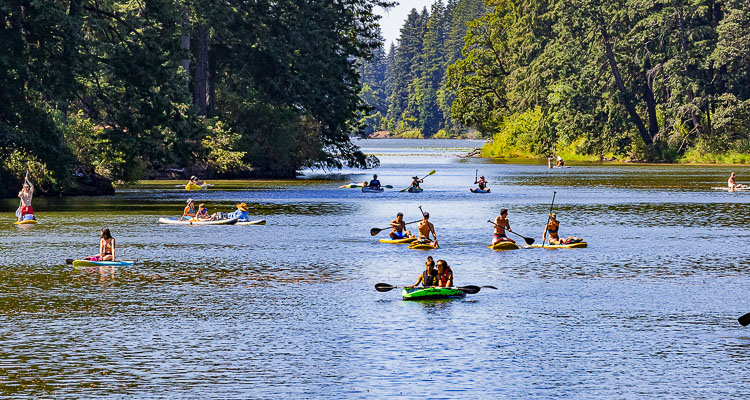
Cooling centers considered a key tool in preventing illness for people without air conditioning
Hot weather is expected to impact Washington state through Friday of this week, with predicted daytime temperatures in the 90s or over 100 degrees in some places. The National Weather Service has issued Excessive Heat Warnings for much of central and eastern Washington, and a Heat Advisory is in effect in western parts of the state. The Washington State Department of Health urges people to take precautions to stay cool, healthy, and safe.
Extreme heat is the deadliest weather-related hazard in the United States. Just last year an unprecedented heat dome event in late June to early July contributed to over 100 deaths in Washington.
Even just a few hours in an air-conditioned environment can help relieve heat stress. However, many homes and facilities in our region do not have air conditioning. Cooling centers can help and they are free to the public. Dial 2-1-1 or use the statewide online resource to find a cooling center near you. Language assistance is available.
Other key recommendations to stay safe and healthy include:
Stay hydrated. Drink plenty of fluids and don’t wait until you’re thirsty to drink.
Never leave any person or pet in a parked vehicle.
Stay indoors and in an air-conditioned environment as much as possible. Visit a cooling center or other public air-conditioned space, like a mall or library. Keep your home cool by closing window shades during the day and using the stove and oven less.
Do not rely on a fan as your only cooling source. Electric fans may provide some comfort, but they won’t prevent heat-related illness when temperatures are very hot.
If you go outside, do so early or late in the day when it’s cooler. Apply sunscreen and wear a hat and light, loose-fitting clothes. Take breaks and seek shade in parks and greenspaces where it will be cooler than paved areas.
Check on friends, family, neighbors, and pets. Check in on and assist those who are vulnerable or at higher risk, such as people who are elderly, ill, or may need help. Protect pets from heat and sun, and beware of asphalt that can burn their paws.
Take action if you notice symptoms of heat illness (dizziness, nausea, headaches, muscle cramps). Move to a cooler location to rest for a few minutes and seek medical attention immediately if you do not feel better.
Practice water safety. Always supervise young children closely when in or around water. Wear a Coast Guard-approved life jacket that fits well during water activities, like boating or paddleboarding.
Check for restrictions or warnings before lighting any outdoor fires. High temperatures and dry conditions increase wildfire risk.
Read the CDC’s frequently asked questions about extreme heat.
The DOH website is a source for a healthy dose of information. Find it on Facebook and follow on Twitter. Sign up for the DOH blog, Public Health Connection.
Also read:
- As the Holiday Season Comes to a Close, We Reflect on Gratitude and HopeReflecting on gratitude and blessings, Clark County Today celebrates the season of Christ’s birth and the light it brings.
- A Christmas Message to Clark CountyCelebrate Christmas with hope, peace, and joy in Clark County Washington.
- Billionaire Democratic supporter calls Inslee’s wealth tax ‘boneheaded’Nick Hanauer criticizes Gov. Inslee’s proposed wealth tax, citing legal and economic concerns.
- Opinion: Washington state paid $8.6 million a year in unnecessary Medicaid premiumsWashington state’s Medicaid program wastes $8.6M annually on duplicate premiums; reforms are needed.
- Opinion: Extending the Yellow MAX Line to Vancouver Is TriMet’s worst idea yetJohn A. Charles Jr. critiques the Yellow MAX Line extension, urging legislators to remove light rail from the project.
- Fire District 3’s leadership changes as longest-serving employee retiresFire Chief Scott Sorenson retires after 45 years of service with Fire District 3.
- County Council seeks volunteers for new Agricultural Advisory CommissionClark County seeks volunteers for the new Agricultural Advisory Commission to support local farms and agriculture.











